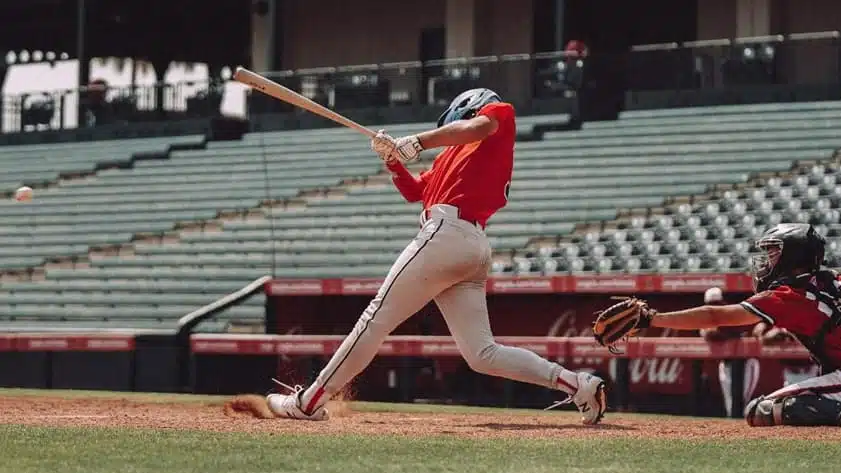16 de April de 2023
Can you Change The Type of Muscle Fiber of Your Athletes?
How Interesting it is to Change Your Athletes’ Muscular Fibers?

Skeletal muscle contains a heterogeneous composition of different fiber types on a continuum from slow to fast, which causes them to have different performances. Within each bundle of fiber types there are also structural and functional differences (Plotkin, Roberts, Roberts, Haun, & Schoenfeld, 2021). In humans, type I, or slow twitch, fibers contract at a slower rate, but are highly resistant to fatigue. Type IIa fibers, or fast oxidative glycolytic fibers, have higher contraction velocities than type I fibers, but are less resistant to fatigue. The third group of fibers are type IIx, or fast glycolytic fibers, which contract at a higher speed and fatigue faster (Smerdu, Karsch-Mizrachi, Campione, Leinwand, & Schiaffino, 1994).
Skeletal muscle fiber composition is one of the important factors that determines performance in a sport, especially if it is purely physical, such as track and field events (Fry et al., 2003). Scientific studies have shown that untrained individuals show a similarity between slow (type I) and fast (type IIa and IIx) fibers, while trained sprinters have an 80% composition of fast fibers, and long-distance runners tipped the balance towards slow fibers (Costill et al., 1976). The question is to what extent these fiber proportions are innate, and what percentage can be changed by training.
Slow or oxidative fibers (type I)
Depending on the sport practiced, it will be more interesting to have a majority of fibers of one type or another. In endurance events, those athletes whose muscles involved in the discipline have a large majority of slow contraction fibers (type I) will have an advantage. These fibers contract more slowly but take much longer to fatigue. Type I fibers have a higher density of mitochondria volume than fast fibers (Sullivan & Pittman, 1987), which explains the delay in fatigue that will help us as endurance athletes.
This type of oxidative fiber is conducive in endurance sports, since we do not need a fast contraction for sprinting or jumping, but we do need to delay muscle fatigue as much as possible. That is why any endurance athlete will want to shift muscle fiber to this side, as it will give them a competitive advantage in their discipline.
Fast or glycolytic fibers (type IIx and IIa)
At the opposite end of the spectrum from long endurance are explosive gestures such as a baseball pitch or boxing punch, which require the fibers to contract as fast as possible, and it doesn’t matter that they fatigue quickly because the action time is so short. The fast fiber type IIx, known in the older literature as IIb, will be the one that will give our athlete an advantage in these purely explosive sports (Andersen & Aagaard, 2010). A 100m sprint totally differs from a marathon in the mountains. In the first case we need pure explosiveness for about 10 seconds, while in the second case the test requires muscle contractions for hours and hours.
Between the slow type I fibers and the explosive type IIx fibers are the IIa fibers, or fast oxidative glycolytic fibers, which have a fast contraction speed (neither slow nor explosive) and do not fatigue too early or too late. Most sports require this type of fiber, since we can cover a big distance during a match, but we will also have to jump, punch or sprint at certain times.
Fast fibers (type IIa and IIx) have a maximum power ten times (type IIx fibers) and six times (type IIa fibers) greater than slow fibers. In addition, type IIx and IIa fibers have demonstrated a contractile speed 4.4 and 3 times greater, respectively, than type I fibers (Malisoux, Francaux, Nielens, & Theisen, 2006). The million-dollar question is whether we can change the muscle fiber to gain a competitive advantage. We will see the answer below.
Is it Possible to Change Muscle fiber? Slow to Fast Fibers and Vice Versa Leading to Controversy

Andersen and Aagaard start one of their publications with the following text: both trainers and scientists know that it is not possible to turn a donkey into a racehorse by exercise and training. Hard work will, at most, turn the donkey into a fast and explosive donkey! (Andersen & Aagaard, 2010). By analyzing the text closely, we have the question solved: yes, you can change muscle fiber, but in a limited way.
The world champions and top athletes in their disciplines, if these are highly dependent on muscle contraction, have percentages of fiber types to back them up. In sports such as soccer, field hockey or basketball, among others, there is a large technical and tactical part that makes it necessary to excel much more than having some types or others of muscle fibers. On the other hand, athletes who excel in purely explosive events are those who have more type IIx fibers. Those who occupy the top positions in long endurance have an overwhelming majority of type I fibers.
The question in the scientific literature is whether it is genetics that has produced these levels in each type of fiber, or whether it is possible to get there with training. In other words, and continuing with Andersen and Aagaard’s text, is a racehorse born, or is it made? A study in twins compared the type of fibers each sibling possessed (Bathgate et al., 2018). One was sedentary, while the one raced recreationally. At the genetic level they should have been equal, but the active twin should have a higher proportion of type I fibers due to his training.
That’s what the researchers found when they analyzed the muscle fibers of both. The untrained twin brother had 55% fewer type I fibers than the brother who ran regularly. In addition, the untrained twin brother had a higher proportion of IIa and IIx fibers, which in the case of the trained twin brother had converted to a more oxidative type I phenotype. This publication indicates that muscle fibers can indeed be changed, and it is supported by much more evidence that we will see throughout the article.
We already know that it is possible to change muscle fibers to make them faster or slower. The real question is to what extent can muscle fibers be changed from one type to another, and what is the ideal way to do it. Changing the muscle fiber to a greater or lesser extent will depend on the athlete’s level of training, age and the plasticity or propensity that each type of fiber has in that individual. That is the explanation, in addition to a favorable genetic base, that will propitiate to find in a biopsy a great percentage of fibers or others in the young talents and best athletes in the world.
Therefore, a racehorse is born and then polished, but if we are born as a “donkey”, we can hardly become a winning racehorse. However, we can modify to some extent the muscle fibers of our athlete to be a fast and explosive donkey, or a slow and “tireless” donkey, depending on the demands of our sport.
Strength Training to Shift into an Explosive Type of Muscle Fiber (Type IIx)

Several studies have indicated that exercise-induced muscle fiber switching only exists between fast twitch fiber types, i.e., oxidative fast IIa fibers to pure fast IIx fibers or vice versa (Scott, Stevens, & Binder-Macleod, 2001). However, many other publications have proven how by properly manipulating training variables, a slow to fast twitch fiber change can potentially be experienced and vice versa (Wilson et al., 2012).
Strength training can be performed in many ways. A weight training session to gain muscle mass has nothing to do with powerlifting training or lifting weights at maximum speed. Current literature indicates that moving high loads with slow speeds, without the intention of moving them as fast as possible, produces a shift from type IIx fibers to a mixed IIa phenotype (Carroll, Abernethy, Logan, Barber, & McEniery, 1998). In pure type I fibers, no significant changes occur when moving loads slowly.
However, when we lift loads at high speeds, or move them slowly, but our intention is to move them as fast as possible, the IIx fibers, the more explosive fibers are maintained, and interestingly, the type I fibers are modified to a faster phenotype: the IIa fibers (Andersen, Klitgaard, & Saltin, 1994). Therefore, real or intentional high-speed training may result in the “loss” of slow type I fibers and a gain of fast type IIa and IIx fibers (Liu, Schlumberger, Wirth, Schmidtbleicher, & Steinacker, 2003).
Scientific evidence suggests that sprint, power, and plyometric training can cause a transition to a more explosive fiber type. However, individuals who begin this style of training with more IIx fibers may not experience as much transition (Plotkin et al., 2021). This shows that changing muscle fiber will happen to a greater or lesser extent depending on the athlete’s level of training. In any case, if we are looking to increase the proportion of fast explosive fibers (type IIx), as much as possible, athletes should employ high intensity, low volume, maximal speed training programs (Wilson et al., 2012).
Speed measuring device for changing the muscle fiber
In the previous paragraphs we have emphasized on several occasions that it is necessary to move loads at the maximum possible speed, even if from the outside the movement looks slow. The best way to motivate athletes and to check that we are really moving the loads at maximum speed, is to have a speed measuring device like the Vitruve one. This small device will show us in real time the speed at which the bar is being moved.
At a motivational level, the athlete will compete to move the bar at maximum speed in each repetition, simply by the fact of seeing or hearing it on the Vitruve device. This behavior will allow us to squeeze each repetition and set and generate those fiber shifts towards a fast and explosive phenotype. If we do not have this device, there is a greater probability that the athlete does not move the load as fast as he can, and that does not generate the maximum benefits if what we seek is to change the muscle fiber, especially if we seek the transition from slow to fast fibers, which we have already seen is the most complex.
Resistance Training to Shift Muscle Fiber Towards an Oxidative Type (Type I)

Endurance training induces a change of fiber type towards a more oxidative phenotype (type I). As we have seen in the previous section, changing the muscle fiber will depend on the level of the athlete and the type of training. As the endurance athlete improves their level, the rate of fiber type change becomes less pronounced, as they will have a greater abundance of type I fibers (Gehlert et al., 2012).
In novice runners there is an exceedingly high decrease in fast type IIx fibers, in turn increasing IIa and type I fibers. These data are observed with biopsies of the main muscles involved in running and endurance tests, which are usually the vastus and soleus (Gallagher et al., 2005). Just as the athlete’s level of training will dictate how much the muscle fiber can be changed, there are certain muscles that are more prone to change fiber type than others.
To shift muscle fiber toward a more oxidative type, athletes must participate in training protocols characterized with high-volume, low-intensity intermittent training programs (Wilson et al., 2012). It is this type of training repeated over time that can change the muscle fiber to make it more resistant to fatigue. However, remember that, depending on each person, it can be done to a greater or lesser extent, and that changing the muscle fiber has genetic limits.
Conclusions
Innate ability will determine an athlete’s performance in his or her sport, as the composition of the type of fibers he or she has from birth will play an important role from a physiological point of view. The proportion of muscle fibers can be modified throughout life, either by training or by a sedentary lifestyle. A given number of slow fibers can become fast, and vice versa.
There is no broad consensus on what happens to the fibers in the long term, since evidence with articles longer than 16 weeks is scarce. In the short term, changes have been found, and the type of fiber fits the sport practiced by the athlete: explosive events with explosive fibers and long duration events with fibers that take longer to fatigue. Much remains to be known, since each muscle has a different plasticity, which favors or hinders this change from one type of fiber to another.
In addition, other factors come into play, such as the athlete’s level of training, with those athletes with a more advanced level having less margin to change the muscle fiber to another type. High volume, low intensity training contributes to increasing the proportion of slow type I fibers, to the detriment of fast fibers. Explosive training of low volume and high intensity and speed will increase the proportion of type IIx fibers, which are the most explosive and fatigable. In the middle ground are the IIa fibers that are required in most sports, and which are trained at medium volumes and medium intensities and speeds. It is the halfway point where strength training in the gym and endurance training in the field converge. Mind you, the fundamental idea of this article is that it is not possible to turn a donkey into a racehorse through exercise and training. Hard work, at most, will turn a donkey into a fast and explosive donkey!
Joaquín Vico Plaza
Bibliographical References
Andersen, J. L., & Aagaard, P. (2010). Effects of strength training on muscle fiber types and size; consequences for athletes training for high-intensity sport. Scandinavian Journal of Medicine & Science in Sports, 20(SUPPL. 2), 32–38. https://doi.org/10.1111/J.1600-0838.2010.01196.X
Andersen, J. L., Klitgaard, H., & Saltin, B. (1994). Myosin heavy chain isoforms in single fibres from m. vastus lateralis of sprinters: influence of training. Acta Physiologica Scandinavica, 151(2), 135–142. https://doi.org/10.1111/J.1748-1716.1994.TB09730.X
Bathgate, K. E., Bagley, J. R., Jo, E., Talmadge, R. J., Tobias, I. S., Brown, L. E., … Galpin, A. J. (2018). Muscle health and performance in monozygotic twins with 30 years of discordant exercise habits. European Journal of Applied Physiology, 118(10), 2097–2110. https://doi.org/10.1007/S00421-018-3943-7
Carroll, T. J., Abernethy, P. J., Logan, P. A., Barber, M., & McEniery, M. T. (1998). Resistance training frequency: strength and myosin heavy chain responses to two and three bouts per week. European Journal of Applied Physiology and Occupational Physiology, 78(3), 270–275. https://doi.org/10.1007/S004210050419
Costill, D. L., Daniels, J., Evans, W., Fink, W., Krahenbuhl, G., & Saltin, B. (1976). Skeletal muscle enzymes and fiber composition in male and female track athletes. Journal of Applied Physiology, 40(2), 149–154. https://doi.org/10.1152/JAPPL.1976.40.2.149
Fry, A. C., Schilling, B. K., Staron, R. S., Hagerman, F. C., Hikida, R. S., & Thrush, J. T. (2003). Muscle Fiber Characteristics and Performance Correlates of Male Olympic-Style Weightlifters. National Strength & Conditioning Association J. Strength Cond. Res, 17(4), 746–754.
Gallagher, P., Trappe, S., Harber, M., Creer, A., Mazzetti, S., Trappe, T., … Tesch, P. (2005). Effects of 84-days of bedrest and resistance training on single muscle fibre myosin heavy chain distribution in human vastus lateralis and soleus muscles. Acta Physiologica Scandinavica, 185(1), 61–69. https://doi.org/10.1111/J.1365-201X.2005.01457.X
Gehlert, S., Weber, S., Weidmann, B., Gutsche, K., Platen, P., Graf, C., … Bloch, W. (2012). Cycling exercise-induced myofiber transitions in skeletal muscle depend on basal fiber type distribution. European Journal of Applied Physiology, 112(7), 2393–2402. https://doi.org/10.1007/S00421-011-2209-4
Liu, Y., Schlumberger, A., Wirth, K., Schmidtbleicher, D., & Steinacker, J. M. (2003). Different effects on human skeletal myosin heavy chain isoform expression: strength vs. combination training. Journal of Applied Physiology (Bethesda, Md. : 1985), 94(6), 2282–2288. https://doi.org/10.1152/JAPPLPHYSIOL.00830.2002
Malisoux, L., Francaux, M., Nielens, H., & Theisen, D. (2006). Stretch-shortening cycle exercises: an effective training paradigm to enhance power output of human single muscle fibers. Journal of Applied Physiology (Bethesda, Md. : 1985), 100(3), 771–779. https://doi.org/10.1152/JAPPLPHYSIOL.01027.2005
Plotkin, D. L., Roberts, M. D., Haun, C. T., & Schoenfeld, B. J. (2021). Muscle Fiber Type Transitions with Exercise Training: Shifting Perspectives. Sports, 9(9). https://doi.org/10.3390/SPORTS9090127
Scott, W., Stevens, J., & Binder-Macleod, S. A. (2001). Human Skeletal Muscle Fiber Type Classifications. Physical Therapy, 81(11), 1810–1816. https://doi.org/10.1093/PTJ/81.11.1810
Smerdu, V., Karsch-Mizrachi, I., Campione, M., Leinwand, L., & Schiaffino, S. (1994). Type IIx myosin heavy chain transcripts are expressed in type IIb fibers of human skeletal muscle. The American Journal of Physiology, 267(6 Pt 1). https://doi.org/10.1152/AJPCELL.1994.267.6.C1723
Sullivan, S. M., & Pittman, R. N. (1987). Relationship between mitochondrial volume density and capillarity in hamster muscles. The American Journal of Physiology, 252(1 Pt 2). https://doi.org/10.1152/AJPHEART.1987.252.1.H149
Wilson, J. M., Loenneke, J. P., Jo, E., Wilson, G. J., Zourdos, M. C., & Kim, J. S. (2012). The effects of endurance, strength, and power training on muscle fiber type shifting. Journal of Strength and Conditioning Research, 26(6), 1724–1729. https://doi.org/10.1519/JSC.0B013E318234EB6F

